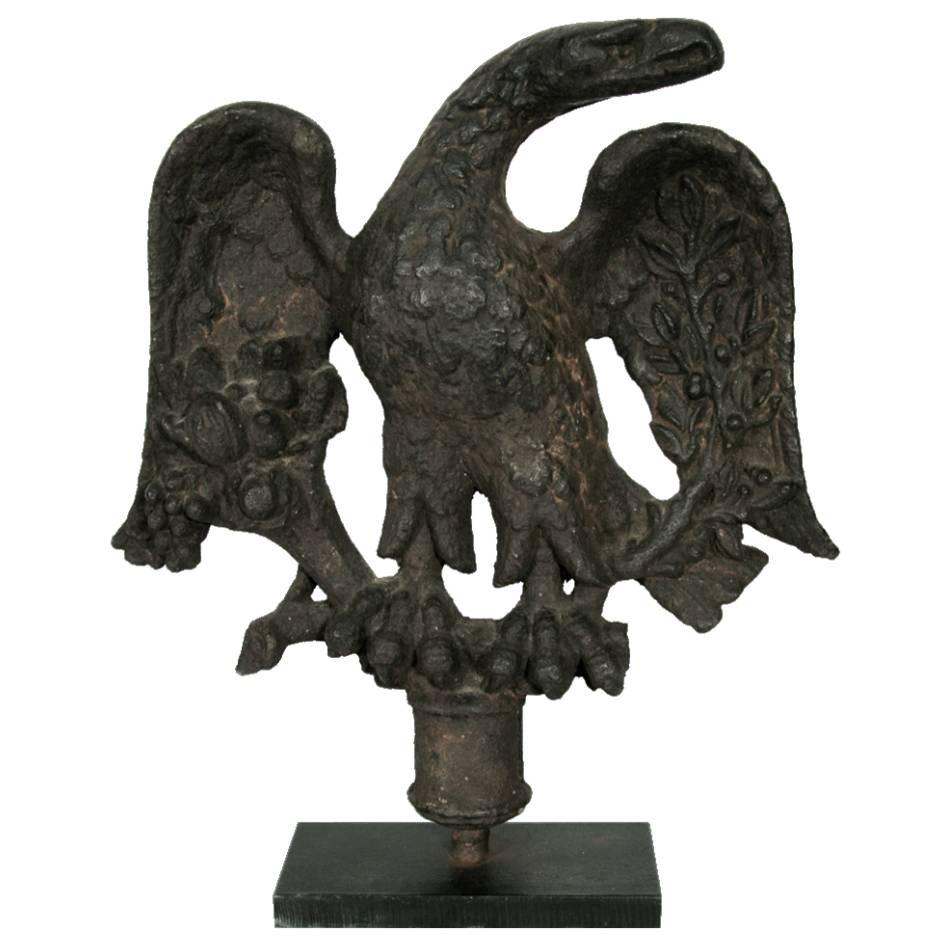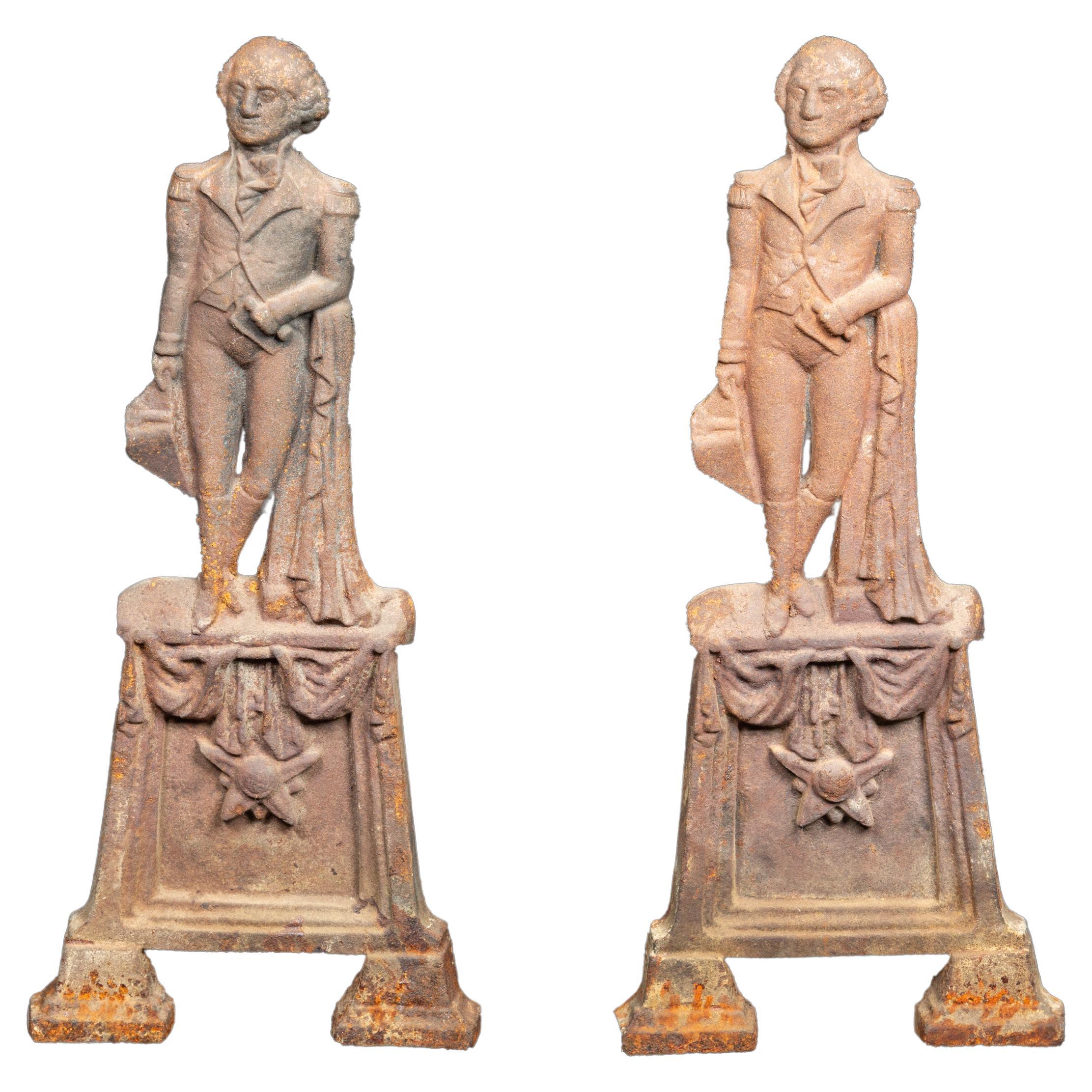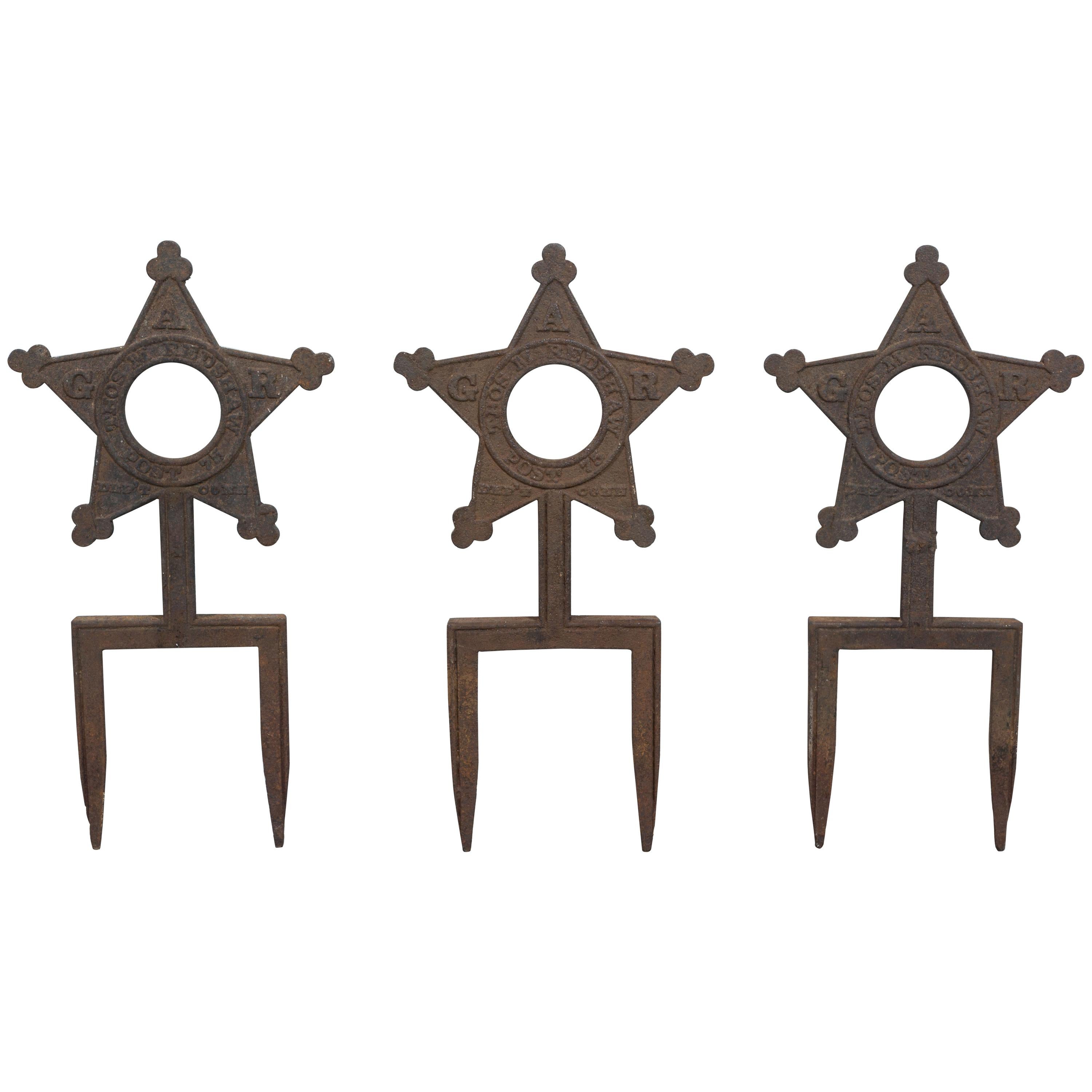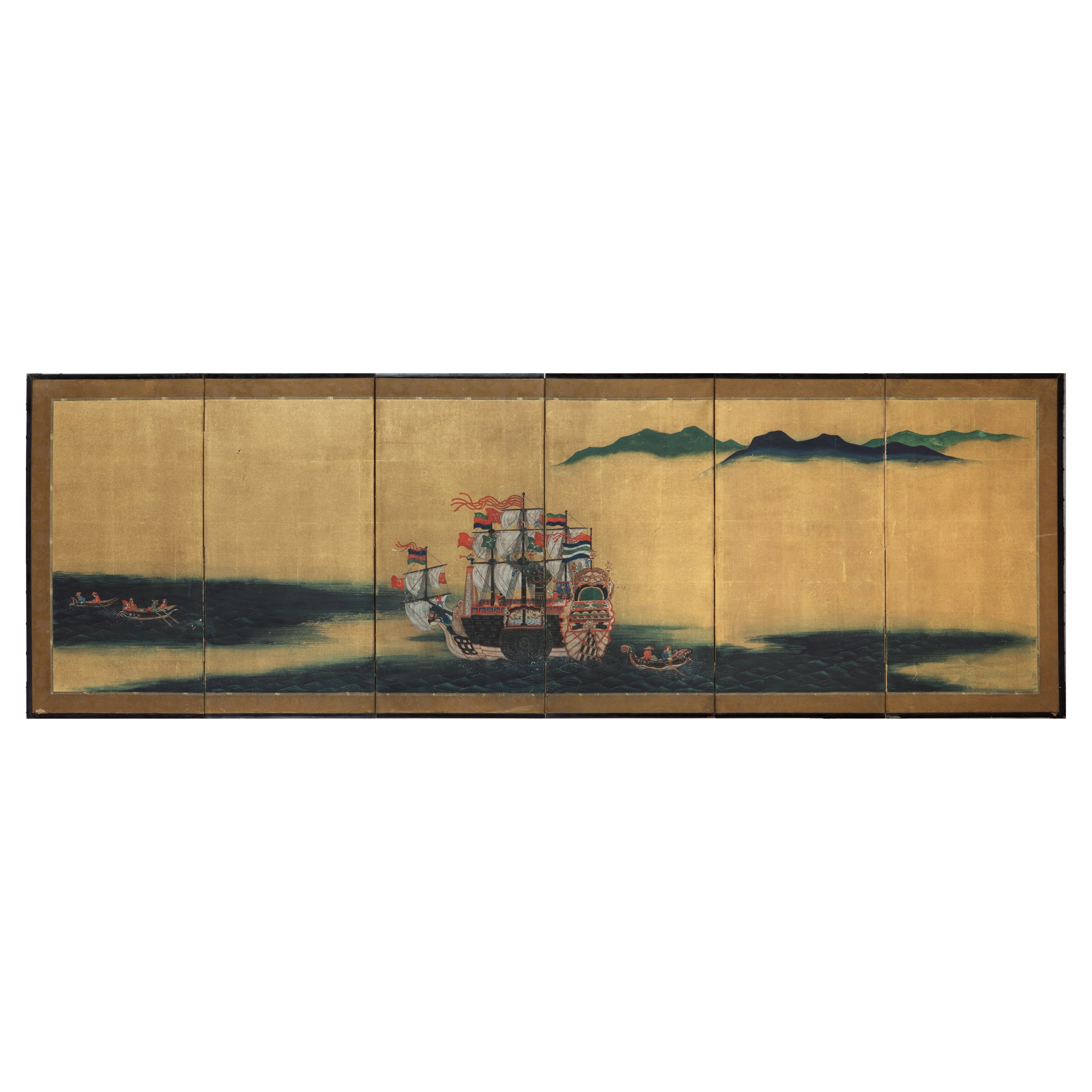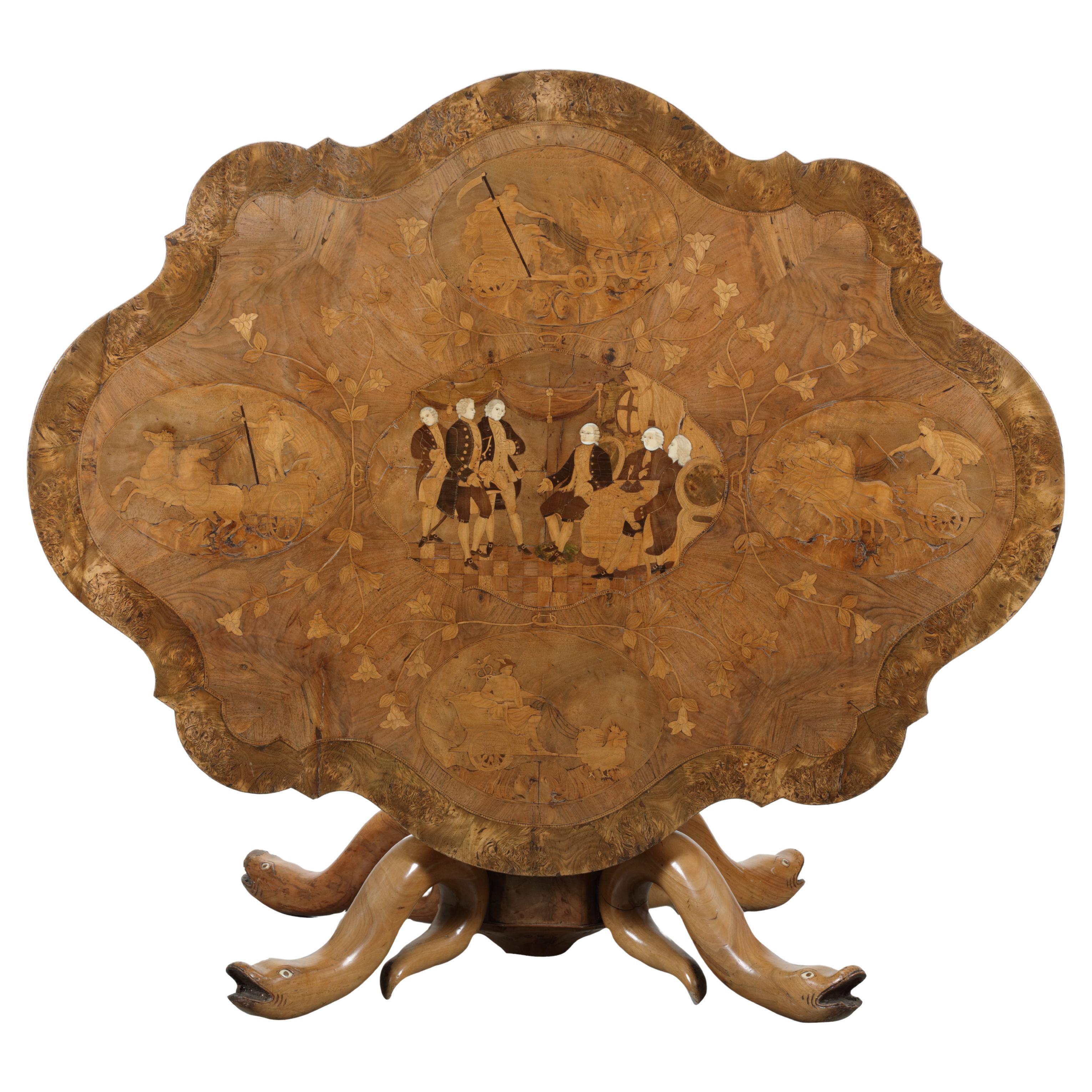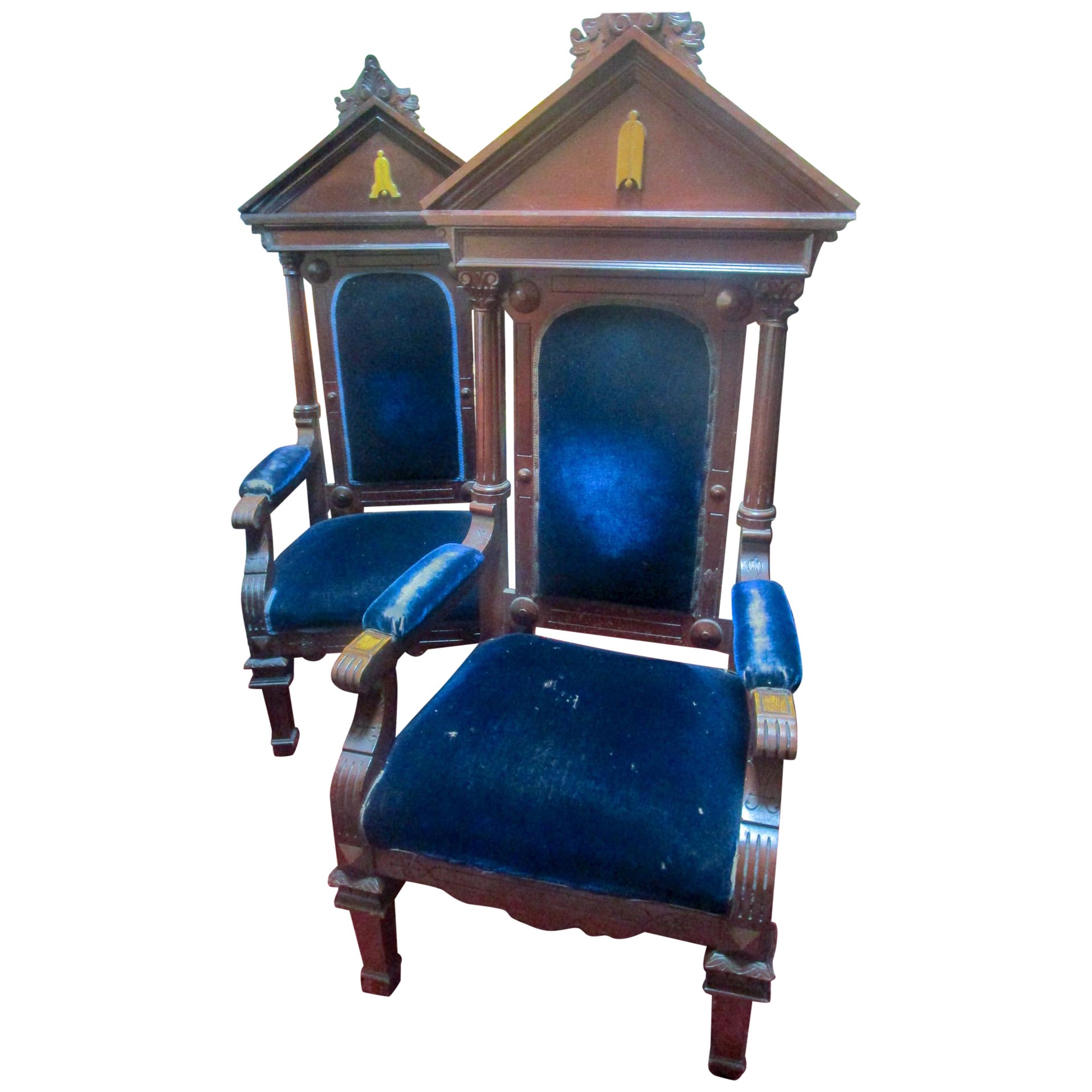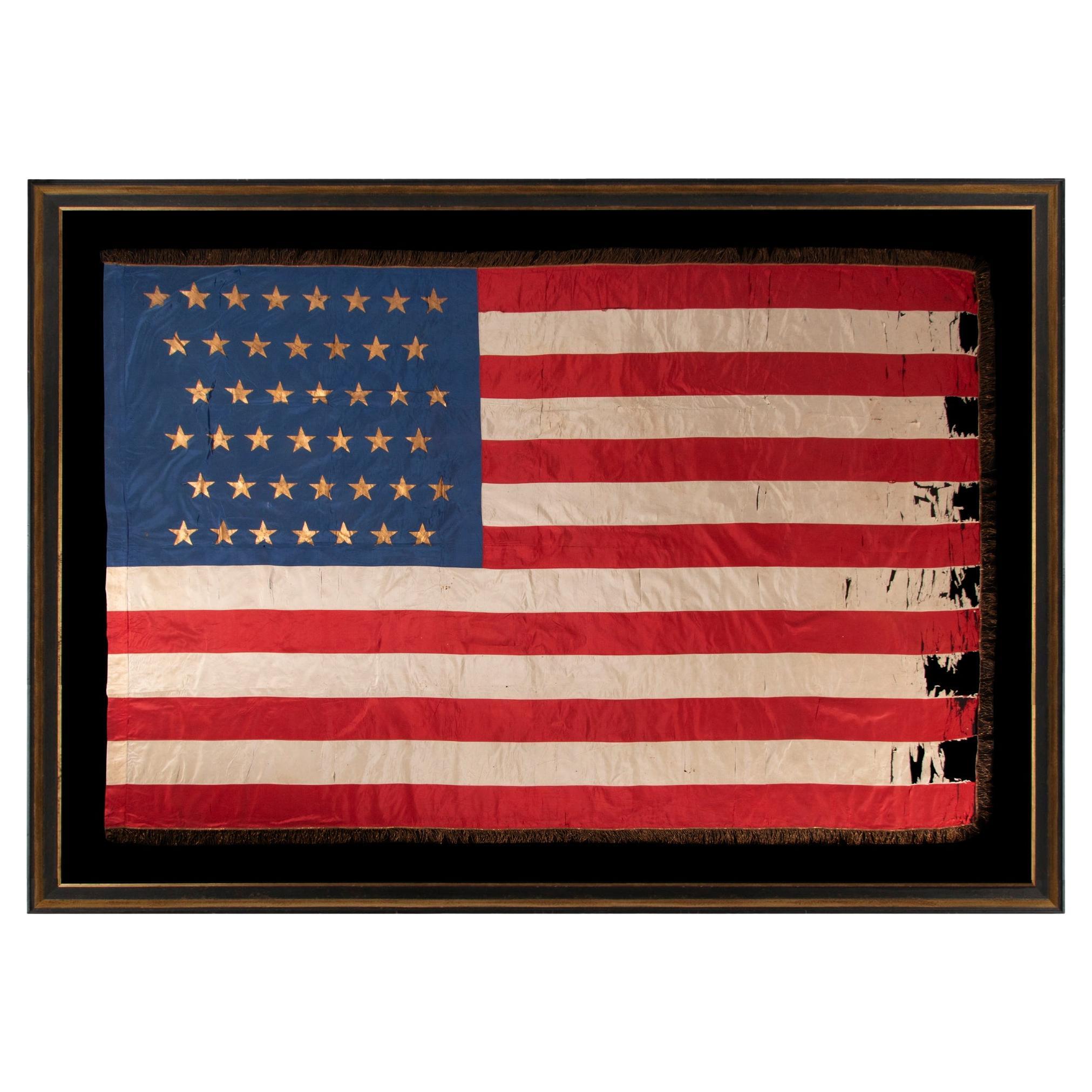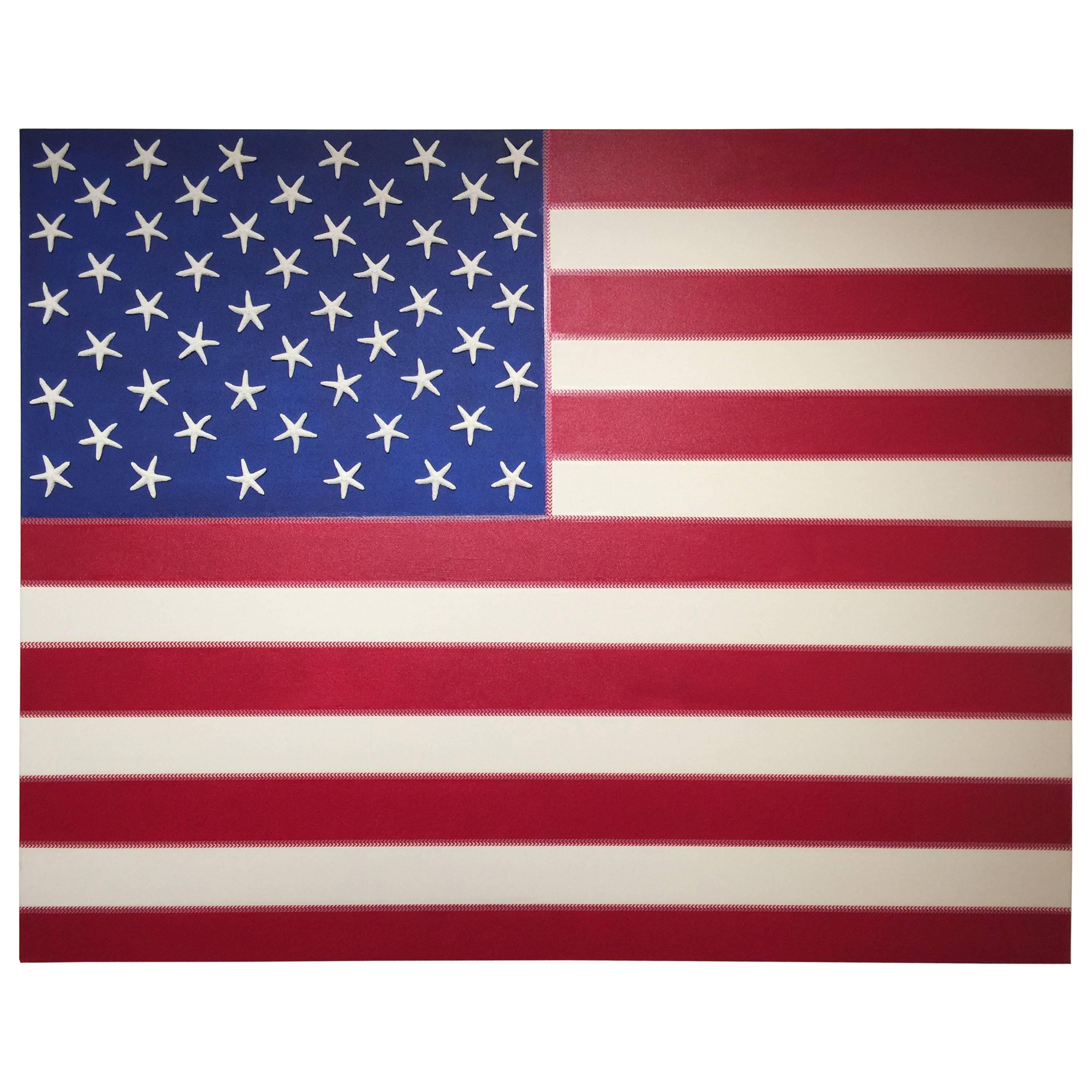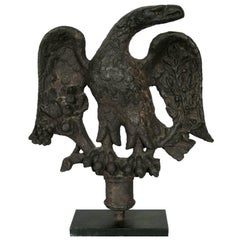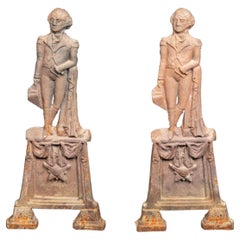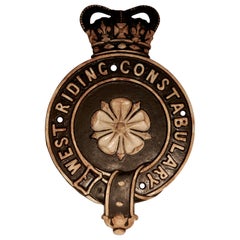
Cast Iron Good Luck
View Similar Items
1 of 3
Cast Iron Good Luck
About the Item
- Dimensions:Height: 8.5 in (21.59 cm)Width: 6 in (15.24 cm)Depth: 0.5 in (1.27 cm)
- Materials and Techniques:
- Place of Origin:
- Period:
- Date of Manufacture:Circa 1900
- Condition:Wear consistent with age and use.
- Seller Location:Los Angeles, CA
- Reference Number:1stDibs: LU8576782300
You May Also Like
- American Federal Period Cast Iron EagleLocated in York County, PAThis cast iron eagle is one of the earliest sculptural forms that one will encounter in the marketplace. It is also one of the most attractive and ico...Category
Antique 1810s American Political and Patriotic Memorabilia
MaterialsIron
- Pair of Cast Iron George Washington Figural AndironsLocated in New York, NYPair of cast iron George Washington Andirons: Measures: 9" x 20" x 16" Weighs: 30 LBS.Category
Early 20th Century American American Classical Andirons
MaterialsIron
- Very Rare West Riding Constabulary Cast Iron Wall PlaqueLocated in Chillerton, Isle of WightVery rare west riding constabulary cast iron wall plaque This branch of the British police force was established in 1825, Yorkshire was divided into ...Category
Antique 1890s British Colonial Political and Patriotic Memorabilia
MaterialsIron
- Cast Iron Boot Jack Made for 1864 Presidential Campaign of George McClellanLocated in York County, PACAST IRON BOOT JACK, MADE FOR THE 1864 PRESIDENTIAL CAMPAIGN OF GENERAL GEORGE B. MC CLELLAN, WITH A FANTASTIC SLOGAN THAT READS "THE UNION AT ALL HAZZARDS" Made for the 1864 presidential run of George B. McClellan, this cast iron bootjack is both rare and graphically exceptional. Displaying the original black-painted surface, with attractive and desirable patina, the stylized profile has a wonderful folk art quality. Molded block letters that wrap around the heel clasp read simply "Gen. Mc Clellan. These are accompanied by a prominent Civil War-associated slogan: "The Union at all Hazards." The text is intermingled with 34 stars, which was equivalent to the number of states during the opening two years of the war, but was one star short by mid-1863 and two stars short by the time of the actual election in 1864. It's not unusual to encounter this feature in civil war campaign parade flags as well as all manner of flag-related ephemera. The iron was reportedly cast by G. & D. Cross of Morrisville, New York, though it is unsigned and I have not yet verified the attribution. I have seen two other examples, one of which had a broken and repaired tine on the U-shaped horns and newly painted surface, while the other appeared to have broken lifters and inferior, rusted patina. This is, hands-down, the best of the identified examples. Brief History of the 1864 Campaign: President Abraham Lincoln had a checkered relationship with his 1864 opponent, who he had formerly chosen as General-in-Chief of the entire Union Army. The career officer repeatedly knocked heads with his Commander-in-Chief. Having raised a well-trained and organized military force, McClellan often seemed reluctant to use it. By 1862, after losses in Virginia during the Peninsula Campaign, Lincoln grew frustrated with McClellan and the progression of the war and removed him from command. By the early part of 1864 the American people shared some of the same frustrations and Lincoln was no longer the clear choice for the White House. The nation was tired of war and the remains of the Democratic Party...Category
Antique 1860s American Political and Patriotic Memorabilia
MaterialsIron
- Collection of Three Cast Iron Star Victorian Daughters of the Revolution MarkersLocated in Santa Monica, CACollection of three Daughters of the Revolution cast iron star markers. Marked GAR Thos Feushaw Post 75 Conn.Category
Antique 1890s North American Folk Art Garden Ornaments
MaterialsIron
- Japanese Screen Depicting USA Commodore Perry’s Flagship the USS MississipiLocated in Amsterdam, NLA rare and fine Japanese six-fold gold-leaf screen with the depiction of Commodore Matthew Perry’s flagship the USS Mississippi Early Bakumatsu period (1853-1867) Measures: H. 61 x W. 183 cm Provenance: Private collection, USA On 8 July 1853 Commodore Matthew Perry with his paddle-wheel warships USS Mississippi and Susquehanna, and two sloops, with a total of 65 guns and little less than 1000 man, for the first time arrived in the harbour of Shimoda, in the bay of Edo, in his own words, “to open doors of commerce, and spread civilization to a backward people, and also to spread the Gospel of God to the heathen.” In Japanese parlance, the American ships quickly became known as “black ships,” depicted as demonic monsters. For the Japanese, these huge coal-burning ships...Category
Antique Late 19th Century Japanese Paintings and Screens
MaterialsPaint, Paper
